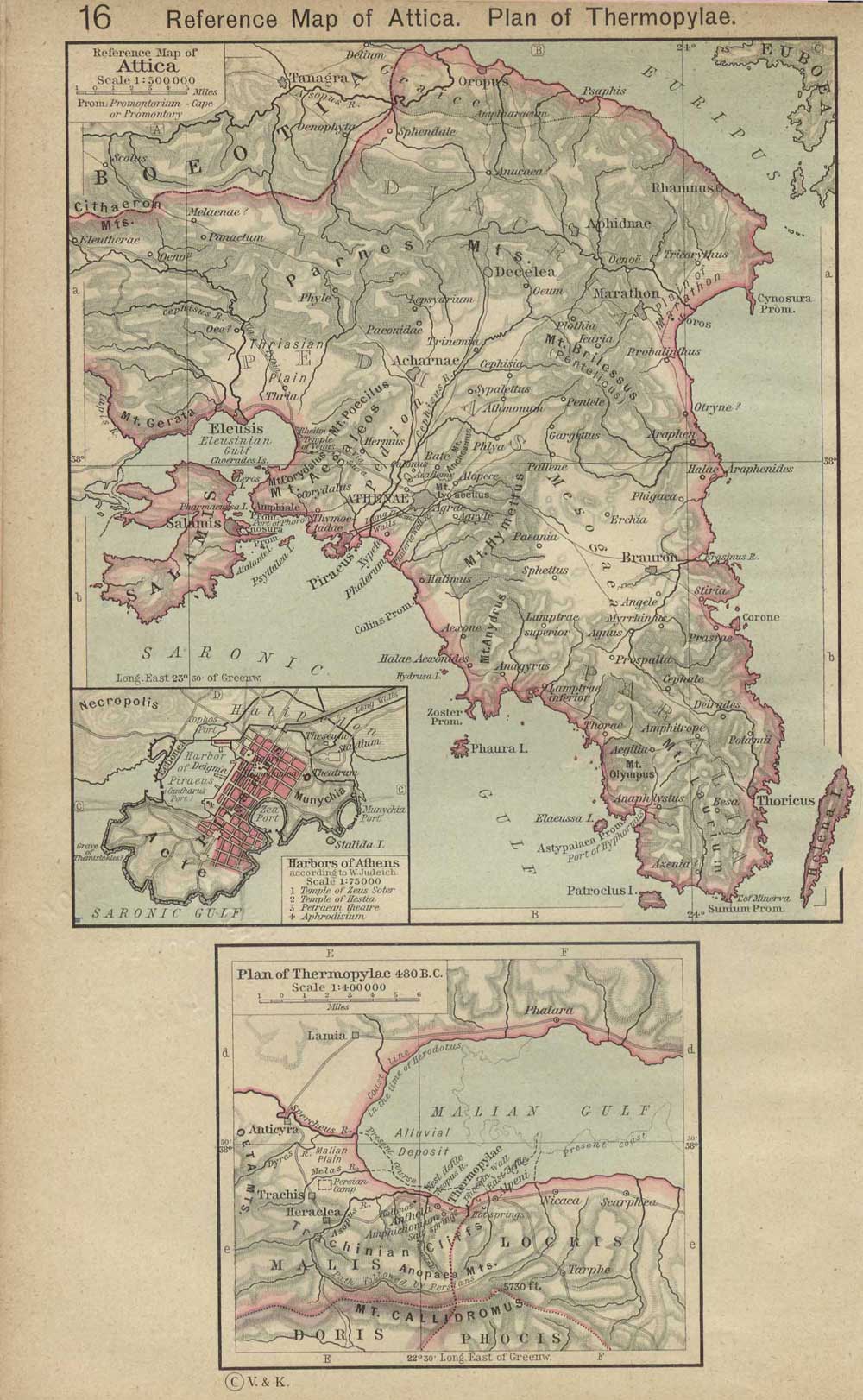A division of Greece, in the form of a triangle, two sides of which are washed by the Aegaean Sea, while the third is separated from Boeotia on the north by the mountains Cithaeron and Parnes. Megaris, which bounds it on the northwest, was formerly a part of Attica. In ancient times it was called Acté and Acticé, or the "coast-land" (aktê), from which the later form, Attica, is said to have been derived. According to tradition, it derived its name from Atthis, the daughter of the mythical king Cranaüs; and old-fashioned etymologists found in it the root which appears in that of the goddess Athené. Attica is divided by many ancient writers into three districts.(1) The Highlands, the northeast of the country.
(2) The Plain, the northwest of the country, including both the plain round Athens and the plain round Eleusis, and extending south to the promontory Zoster.
(3) The Seacoast District, the south part of the country, terminating in the promontory Sunium. Besides these three divisions, we also read of
(4) the Midland District, still called Mesogia, an undulating plain in the middle of the country.
The soil of Attica is not very fertile. The greater part of it is not adapted for growing corn; but it produces olives, figs, and grapes, especially the two former, in great perfection. The country is dry; the chief river is the Cephissus, rising in Parnes and flowing through the Athenian plain. The abundance of wild flowers in the country made the honey of Mount Hymettus very celebrated in antiquity. Excellent marble was obtained from the quarries of Pentelicus, northeast of Athens, and a considerable supply of silver from the mines of Laurium near Sunium. The territory of Attica, including the island of Salamis, which belonged to it, contained between 700 and 800 square miles; and the population in its flourishing period was probably about 500,000, of which nearly four fifths were slaves.
Attica is said to have been originally inhabited by Pelasgians. Its most ancient political division was into twelve independent States, attributed to Cecrops, who, according to some legends, came from Egypt. Subsequently Ion, the grandson of Hellen, divided the people into four tribes, Geleoutes, Hopletes, Argades, and Aegicores; and Theseus, who united the twelve independent States of Attica into one political body and made Athens the capital, again divided the nation into three classes, the Eupatridae, Geomori, and Demiurgi. Clisthenes (B.C. 510) abolished the old tribes and created ten new ones, according to a geographical division; these tribes were subdivided into demes or townships. (Harpers Dictionary of Classical Antiquities, 1898)
